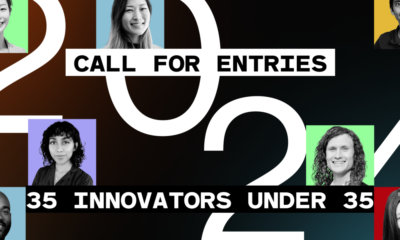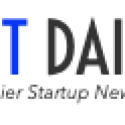Politics
6 Open Source Web3 Projects Worth Checking Out in 2023
Published
12 months agoon
By
Drew Simpson
2022 saw both an insane rise and then fall in the interest of Web3 and blockchain development.
In the first half of the year, it felt like every time I logged onto Twitter, I’d see an update from a new brand that secured funding or an update on a project’s incredible growth.
The latter half of the year saw things slow down. As the hype dried up, so too did many of the projects that were — if we’re being honest, not exactly useful.
The good news is this current bear market has left only the most intrepid of developers and builders behind—people who are working to solve real problems with great solutions.
As I spend the best part of my day analyzing Web3 projects, I thought I’d take this opportunity to highlight a few great Web3 open-source projects for you to check out in 2023.
Wait, why should I care if a project is open-source?
So look, if you want to TL;DR of this, there’s a great summary in this post.
Open-source software has already proven its potential for improving accessibility, connecting developers together, and reducing costs.
That really highlights the key benefits.
However, there’s a little more nuance in the conversation, especially if you consider its relationship to Web3 and blockchain.
Here are a few key points that really highlight the overlap between open source and Web3.
Open source allows developers and users to work together without explicitly trusting each other
That sounds terribly familiar.
People can collaborate without explicit trust, almost like a public blockchain.
A lot of focus in Web3 and blockchain tech is centered on the features and benefits, like all the people talking endlessly about permissionless blockchains being more transparent and censor-resistant.
That’s great, but there’s a cultural element here as well.
Web3 is, by design, more collaborative.
It enables people from different areas and walks of life to collaborate on projects and work towards common goals without lengthy application processes and checks.
Collaboration > code
There’s been a long history of engineers being the driving force and most prized assets in tech company growth.
Code itself has been the moat upon which many brands have built and maintained a market leader position.
However, I’m pretty certain this will change in the next few years.
First, you’ve got the open-source nature of Web3. As more brands adopt open source, the moat created by code alone will diminish.
Add to that the growing use of AI to handle complex tasks like coding, and there will be a much faster cycle of code writing and improvements.
Brands are going to have to look at different ways to differentiate.
One of the best ways is for brands to create a community and develop a guiding mission that attracts more users to their cause.
Much like many of the best Web3 brands are already doing.
This is what many open-source projects also achieve by allowing anyone to contribute and have some feeling of ownership.
The cost of open source is creator-friendly
Web3 has a strong focus on the creator.
We want creators to be fairly compensated for their work and to be able to pursue their goals.
Much proprietary software — both in terms of usage and development — is slow to improve and costly to use.
Open-source software is generally cheaper for all involved, which will enable more creators to build solutions that solve real-world issues.
And all at costs far more friendly than established methods.
I could keep going on the overlaps between open source and Web3, but you get the idea.
They share a lot of the same core concepts.
Open Source Social Media
In the spirit of Web3 and decentralization, there’s been a push from developers in the space to democratize social media (and remove the controlling influence of centralized entities).
There are a few open-source projects worthy of note; let’s start with the big one you probably already know.
Mastodon
Mastodon is an open-source, decentralized social media platform allowing users to create their own communities and share content with others.
It’s been around for a few years now (since 2016) but started to get a large interest when Elon took over Twitter and started flexing his muscles.
Mastodon is built on ActivityPub, a protocol for federated (or distributed) social networks.
This means that any user can join any Mastodon instance, allowing them to communicate with people from all over the world.
The only issue with Mastodon is it can be a little difficult for users to get to grips with. If you can persist, it’s quite a cool network.
Farcaster
Farcaster’s a relatively new open-source social media platform that’s been gaining traction in the Web3 space.
It’s built on top of IPFS, allowing users to store their data and content on a distributed network.
Farcaster also has an interesting feature called ‘stacks,’ which allows users to create their own custom feeds from multiple sources.
This means you can follow people from different networks (the equivalent of Twitter, Reddit, etc.) all in one place.
The great thing about Farcaster is that you can build your own app to interact with the wider Farcaster network.
Open Source Crypto Wallets
If you’ve spent any time in Web3, you’ll know that a wallet is basically your passport to use the dApps and projects in the space.
There are plenty of great crypto wallets to choose from, but the most popular is an open-source project.
MetaMask
MetaMask is a browser extension wallet that allows users to store, send and receive Ethereum-based tokens.
It’s been around since 2016 and is one of the most popular wallets in the space — mainly because it makes syncing to dApps incredibly easy.
In addition to connecting to dApps, you can use it to store crypto and buy/swap cryptocurrencies.
MetaMask is an open-source project and probably one of the first wallets you should consider using.
Open Source Cryptocurrency Exchanges
If we’re being honest, crypto exchanges are where most interest in Web3 still resides.
Probably because this is where the money lies.
The good news is there are a few great open-source crypto exchanges available for you to check out and use as inspiration if you ever consider building your own crypto exchange.
Uniswap
Uniswap is, without a doubt, the most popular decentralized cryptocurrency exchange. It’s an open-source project that allows users to trade Ethereum-based tokens directly from their wallets.
Uniswap is built on the Ethereum blockchain and uses an Automated Market Maker (AMM) to facilitate trades.
This means that users don’t need to rely on order books or centralized entities to make trades, making it incredibly secure and efficient.
HollaEx
HollaEx is an open-source cryptocurrency exchange platform, but it’s also a little different. HollaEx’s USP is that it allows users to create their own decentralized exchanges.
It’s built on top of the HollaEx Kit, which is a suite of tools and services designed to make setting up a crypto exchange as easy as possible.
HollaEx also offers a range of features, such as multi-currency support, an order-matching engine, liquidity management, and more.
It also supports both fiat and crypto payments, making it a pretty versatile exchange.
Open Source Decentralized Storage
The digital storage game is dominated by AWS right now.
but several brands are popping up that offer decentralized file storage. Often that comes with a much lower cost and often with faster transfer times. Here are a few to note:
Storj
Storj is an open-source decentralized storage platform that allows users to store and access data in a secure, distributed network.
It uses blockchain technology and cryptography to ensure data integrity and privacy.
The platform is powered by its own cryptocurrency, STORJ, which is used to pay for storage space on the network. Storj also has a marketplace where users can buy or sell storage space.
Storj offers a range of features such as end-to-end encryption, sharding (splitting files into smaller pieces), and redundancy (storing multiple copies of files).
Web3 is Being Built on Collaboration
Collaboration and community are at the core of many Web3 projects. The above are just a taste of the solutions people build you can get involved in and help with.
There are plenty of options for you to choose from, be it NFT collections with real use cases and communities or more tech-heavy options related to the Metaverse. There are plenty of options out there; the only struggle you’ll have is narrowing down your selection.
If you want a little help and to see what people are working on in Web3, check out our growing list of Web3 projects and brands at Decent Reviews.
And if you want another round-up piece like this, let us know, and I’ll put another together.
Featured Image Credit: Photo by ThisIsEngineering; Pexels; Thank you!
Pete Boyle
Pete Boyle is the Founder of Decent Reviews, a user-generated review site for Web3 brands.
He helps users find the best Web3 tools and Web3 brands get feedback to help them improve.
You may like
Politics
Fintech Kennek raises $12.5M seed round to digitize lending
Published
7 months agoon
10/11/2023By
Drew Simpson
London-based fintech startup Kennek has raised $12.5 million in seed funding to expand its lending operating system.
According to an Oct. 10 tech.eu report, the round was led by HV Capital and included participation from Dutch Founders Fund, AlbionVC, FFVC, Plug & Play Ventures, and Syndicate One. Kennek offers software-as-a-service tools to help non-bank lenders streamline their operations using open banking, open finance, and payments.
The platform aims to automate time-consuming manual tasks and consolidate fragmented data to simplify lending. Xavier De Pauw, founder of Kennek said:
“Until kennek, lenders had to devote countless hours to menial operational tasks and deal with jumbled and hard-coded data – which makes every other part of lending a headache. As former lenders ourselves, we lived and breathed these frustrations, and built kennek to make them a thing of the past.”
The company said the latest funding round was oversubscribed and closed quickly despite the challenging fundraising environment. The new capital will be used to expand Kennek’s engineering team and strengthen its market position in the UK while exploring expansion into other European markets. Barbod Namini, Partner at lead investor HV Capital, commented on the investment:
“Kennek has developed an ambitious and genuinely unique proposition which we think can be the foundation of the entire alternative lending space. […] It is a complicated market and a solution that brings together all information and stakeholders onto a single platform is highly compelling for both lenders & the ecosystem as a whole.”
The fintech lending space has grown rapidly in recent years, but many lenders still rely on legacy systems and manual processes that limit efficiency and scalability. Kennek aims to leverage open banking and data integration to provide lenders with a more streamlined, automated lending experience.
The seed funding will allow the London-based startup to continue developing its platform and expanding its team to meet demand from non-bank lenders looking to digitize operations. Kennek’s focus on the UK and Europe also comes amid rising adoption of open banking and open finance in the regions.
Featured Image Credit: Photo from Kennek.io; Thank you!
Radek Zielinski
Radek Zielinski is an experienced technology and financial journalist with a passion for cybersecurity and futurology.
Politics
Fortune 500’s race for generative AI breakthroughs
Published
7 months agoon
10/11/2023By
Drew Simpson
As excitement around generative AI grows, Fortune 500 companies, including Goldman Sachs, are carefully examining the possible applications of this technology. A recent survey of U.S. executives indicated that 60% believe generative AI will substantially impact their businesses in the long term. However, they anticipate a one to two-year timeframe before implementing their initial solutions. This optimism stems from the potential of generative AI to revolutionize various aspects of businesses, from enhancing customer experiences to optimizing internal processes. In the short term, companies will likely focus on pilot projects and experimentation, gradually integrating generative AI into their operations as they witness its positive influence on efficiency and profitability.
Goldman Sachs’ Cautious Approach to Implementing Generative AI
In a recent interview, Goldman Sachs CIO Marco Argenti revealed that the firm has not yet implemented any generative AI use cases. Instead, the company focuses on experimentation and setting high standards before adopting the technology. Argenti recognized the desire for outcomes in areas like developer and operational efficiency but emphasized ensuring precision before putting experimental AI use cases into production.
According to Argenti, striking the right balance between driving innovation and maintaining accuracy is crucial for successfully integrating generative AI within the firm. Goldman Sachs intends to continue exploring this emerging technology’s potential benefits and applications while diligently assessing risks to ensure it meets the company’s stringent quality standards.
One possible application for Goldman Sachs is in software development, where the company has observed a 20-40% productivity increase during its trials. The goal is for 1,000 developers to utilize generative AI tools by year’s end. However, Argenti emphasized that a well-defined expectation of return on investment is necessary before fully integrating generative AI into production.
To achieve this, the company plans to implement a systematic and strategic approach to adopting generative AI, ensuring that it complements and enhances the skills of its developers. Additionally, Goldman Sachs intends to evaluate the long-term impact of generative AI on their software development processes and the overall quality of the applications being developed.
Goldman Sachs’ approach to AI implementation goes beyond merely executing models. The firm has created a platform encompassing technical, legal, and compliance assessments to filter out improper content and keep track of all interactions. This comprehensive system ensures seamless integration of artificial intelligence in operations while adhering to regulatory standards and maintaining client confidentiality. Moreover, the platform continuously improves and adapts its algorithms, allowing Goldman Sachs to stay at the forefront of technology and offer its clients the most efficient and secure services.
Featured Image Credit: Photo by Google DeepMind; Pexels; Thank you!
Deanna Ritchie
Managing Editor at ReadWrite
Deanna is the Managing Editor at ReadWrite. Previously she worked as the Editor in Chief for Startup Grind and has over 20+ years of experience in content management and content development.
Politics
UK seizes web3 opportunity simplifying crypto regulations
Published
7 months agoon
10/10/2023By
Drew Simpson
As Web3 companies increasingly consider leaving the United States due to regulatory ambiguity, the United Kingdom must simplify its cryptocurrency regulations to attract these businesses. The conservative think tank Policy Exchange recently released a report detailing ten suggestions for improving Web3 regulation in the country. Among the recommendations are reducing liability for token holders in decentralized autonomous organizations (DAOs) and encouraging the Financial Conduct Authority (FCA) to adopt alternative Know Your Customer (KYC) methodologies, such as digital identities and blockchain analytics tools. These suggestions aim to position the UK as a hub for Web3 innovation and attract blockchain-based businesses looking for a more conducive regulatory environment.
Streamlining Cryptocurrency Regulations for Innovation
To make it easier for emerging Web3 companies to navigate existing legal frameworks and contribute to the UK’s digital economy growth, the government must streamline cryptocurrency regulations and adopt forward-looking approaches. By making the regulatory landscape clear and straightforward, the UK can create an environment that fosters innovation, growth, and competitiveness in the global fintech industry.
The Policy Exchange report also recommends not weakening self-hosted wallets or treating proof-of-stake (PoS) services as financial services. This approach aims to protect the fundamental principles of decentralization and user autonomy while strongly emphasizing security and regulatory compliance. By doing so, the UK can nurture an environment that encourages innovation and the continued growth of blockchain technology.
Despite recent strict measures by UK authorities, such as His Majesty’s Treasury and the FCA, toward the digital assets sector, the proposed changes in the Policy Exchange report strive to make the UK a more attractive location for Web3 enterprises. By adopting these suggestions, the UK can demonstrate its commitment to fostering innovation in the rapidly evolving blockchain and cryptocurrency industries while ensuring a robust and transparent regulatory environment.
The ongoing uncertainty surrounding cryptocurrency regulations in various countries has prompted Web3 companies to explore alternative jurisdictions with more precise legal frameworks. As the United States grapples with regulatory ambiguity, the United Kingdom can position itself as a hub for Web3 innovation by simplifying and streamlining its cryptocurrency regulations.
Featured Image Credit: Photo by Jonathan Borba; Pexels; Thank you!
Deanna Ritchie
Managing Editor at ReadWrite
Deanna is the Managing Editor at ReadWrite. Previously she worked as the Editor in Chief for Startup Grind and has over 20+ years of experience in content management and content development.






